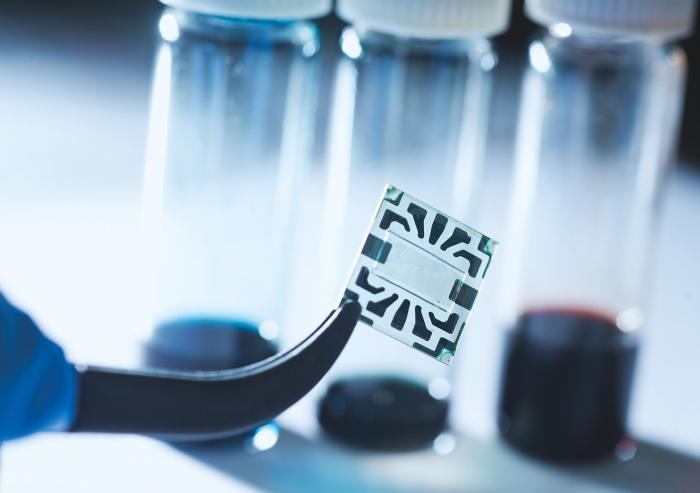Thin, transparent, solar cells are an emerging technology with the enormous potential to create windows, vehicles, electronic devices and more with integrated power generation capacity, as well as solar panels which are lighter and less fragile than current c-Si technology. A team of researchers from MIT’s Energy Initiative has developed such a solar cell using low-cost organic materials and electrodes made from graphene.
The team’s key achievement in developing the cell was the method of depositing a graphene electrode layer just one-atom thick on top of the solar cell, without damaging the sensitive organic materials beneath.
Finding suitable electrode materials to carry current out of a cell without reducing transparency has been a major barrier to research in this area. Graphene is one such material – conductive, transparent and flexible, and has been used as the bottom electrode in previous transparent solar cells, however problems depositing a top layer of graphene without damaging the layers beneath, and with having 2 electrodes of the same material and properties, needed to be overcome.
The MIT researchers developed a graphene-polymer stack, and pressed a 0.5mm thick frame of silicon rubber onto it, creating a kind of stamp. They were then able to lift the polymer structure out and peel off the silicon rubber, leaving the graphene layer deposited on the cell.
Tests showed that further work was still needed to get the graphene layer to adhere tightly, limiting the current that could flow out of the cell. The researchers came up with a novel solution, adding a layer of ethyl-vinyl acetate (EVA) on top of the graphene with the expectation that it would adhere without creating a new layer between that graphene and the hole transport layer (HTL) below.
“We thought, what happens if we spray this very soft, sticky polymer on top of the graphene?” explains graduate student Yi Song. “It would not be in direct contact with the hole transport layer, but because graphene is so thin, perhaps its adhesive properties might remain intact through the graphene.”
This process was successful, adhering tightly to the HTL and forcing the graphene layer to do the same. The EVA also unexpectedly solved another problem, changing the properties of the top graphene electrode to differ from the bottom one, to ensure smooth electron flow.
“We got lucky,” continues Song. “Our top and bottom electrodes just happen to have the correct work functions as a result of the processes we use to make them.”
Organic solar cells incorporating the electrodes achieved efficiencies of 2.8 to 4.1%. While still far from commercially viable levels, MIT states that these results represent significant improvement over previous work using all graphene electrodes. Tests also showed that the devices performed similarly on different substrates including plastic, paper and Kapton tape.
The researchers say they will now focus improving the efficiency of their cells without sacrificing transparency, and start to consider ways to scale the cells up to large areas such as windows or walls.
This content is protected by copyright and may not be reused. If you want to cooperate with us and would like to reuse some of our content, please contact: editors@pv-magazine.com.




1 comment
By submitting this form you agree to pv magazine using your data for the purposes of publishing your comment.
Your personal data will only be disclosed or otherwise transmitted to third parties for the purposes of spam filtering or if this is necessary for technical maintenance of the website. Any other transfer to third parties will not take place unless this is justified on the basis of applicable data protection regulations or if pv magazine is legally obliged to do so.
You may revoke this consent at any time with effect for the future, in which case your personal data will be deleted immediately. Otherwise, your data will be deleted if pv magazine has processed your request or the purpose of data storage is fulfilled.
Further information on data privacy can be found in our Data Protection Policy.